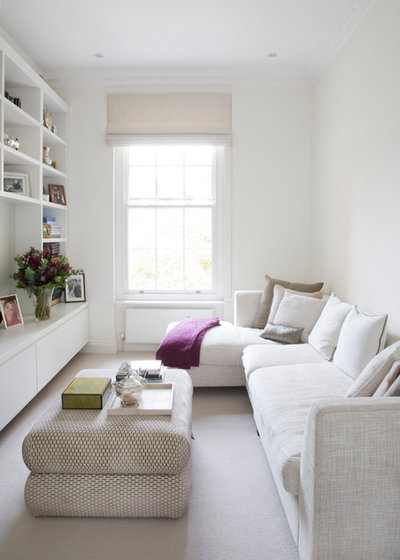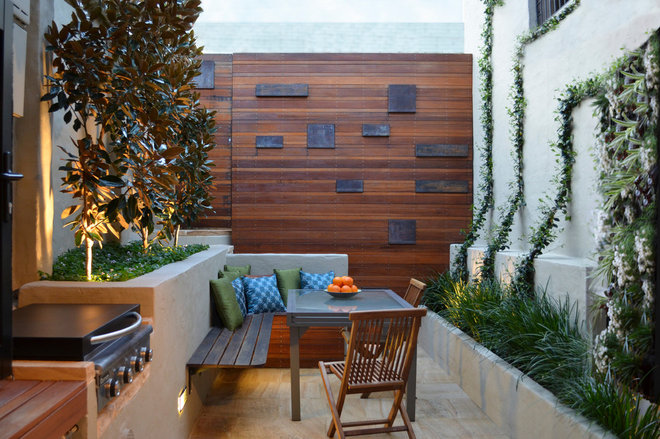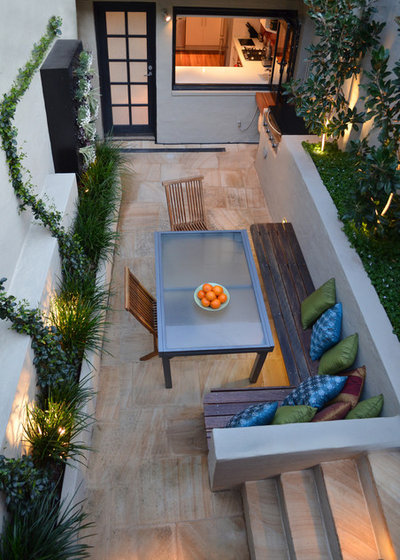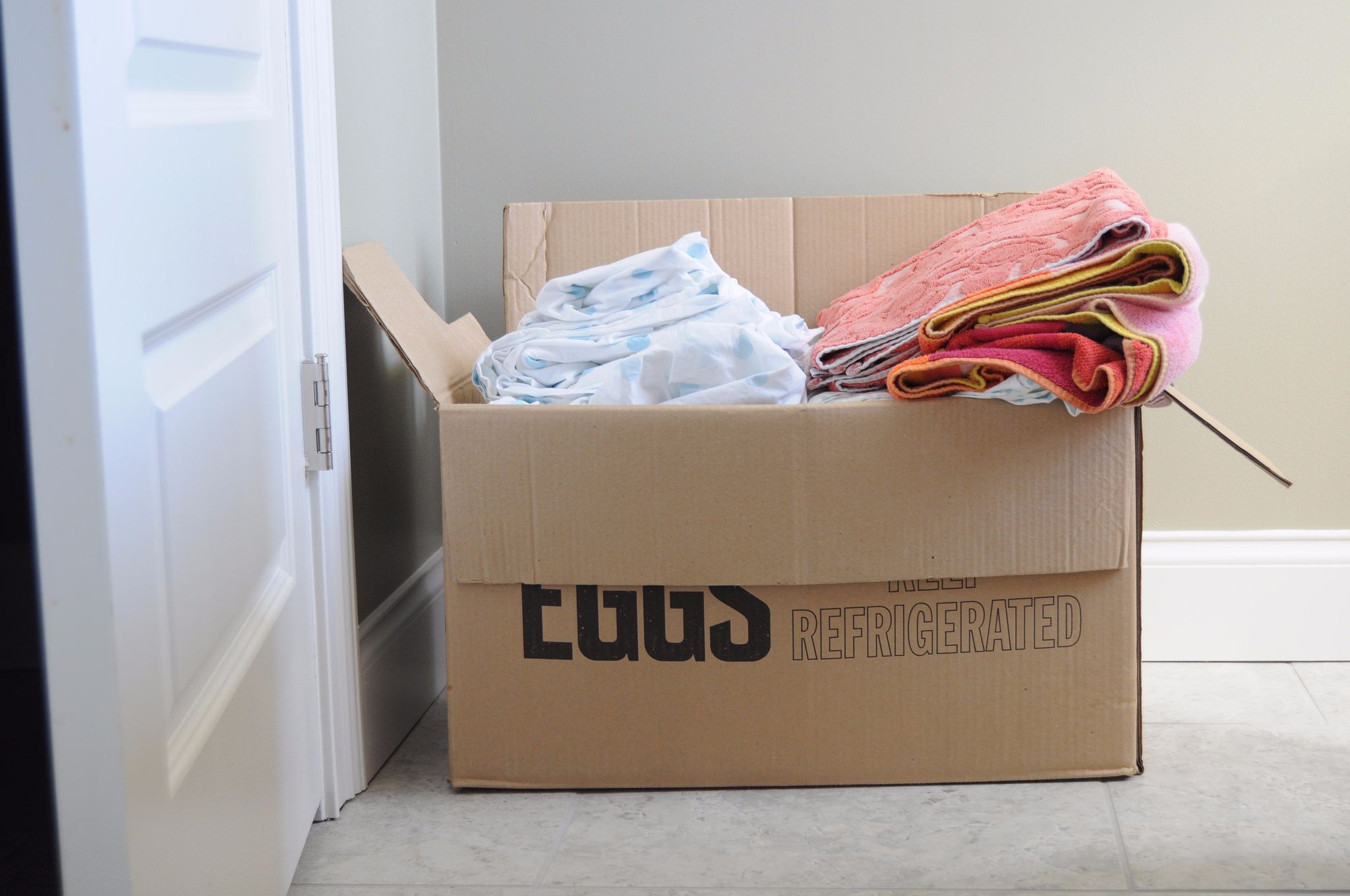Your kids have moved out, and you’ve traded in the family home for a smaller abode, one that’s closer to the action (or the beach). Along with the memories you’re leaving behind, about which you’ll have mixed feelings, your new home will bring with it changes to your lifestyle you may not anticipate. Prepare for this exciting next stage in your life by arming yourself with knowledge. If you know what may be coming, you’ll be better equipped to make the transition with ease.
You can see and hear your neighbors. Only once you move into a new house do you tend to discover the people you’re living next door to and how loud they are — something far more obvious if you have a wall in common or your backyards sit side by side. Upgrading the window treatments in your home may be necessary to increase privacy, and screening plants may be needed to make your backyard feel more like an oasis.
The upside: Get to know your neighbors, and you’ve taken the first step toward building a community in your new neighborhood. Old friends are gold, but making friends next door will enhance the everyday.
Get ideas for privacy screens
The upside: Get to know your neighbors, and you’ve taken the first step toward building a community in your new neighborhood. Old friends are gold, but making friends next door will enhance the everyday.
Get ideas for privacy screens
Storage becomes your new best friend. The double vanity, expansive counter and plentiful storage you’ve taken for granted may well be things you miss about your old bathroom — and this could be one of the first rooms you renovate in your new home. In the meantime, rest assured that you’ll get used to having less surface space on which to rest your belongings, and accumulating bathroom clutter will no longer be an option.
The upside: Give yourself permission to acquire only products you love. You’ll have fewer of them, so it’s the perfect excuse to splurge.
The upside: Give yourself permission to acquire only products you love. You’ll have fewer of them, so it’s the perfect excuse to splurge.
It’s harder to have your own space. If you live with your partner, moving to a smaller abode means more time spent face to face. Retired empty nesters who’ve planned ahead do well to develop separate interests (to give each other space and things to talk about), as well as activities they like to do together (retirees who play together stay together).
The upside: You may have a smaller home and fewer opportunities for time on your own, but you’ll also have fewer rooms that need cleaning.
The upside: You may have a smaller home and fewer opportunities for time on your own, but you’ll also have fewer rooms that need cleaning.
Your furniture may no longer work. Even if you’ve made careful measurements and found new homes for the furniture that clearly wasn’t going to fit in your new place, you may not realize until you move in that what you’ve brought just isn’t going to work. A light-filled room can highlight stains you hadn’t noticed, the color or style may be all wrong for the space, and the way you find yourself using a room may mean that your furniture feels like a mismatch. For example, you may find yourself watching TV in bed but reading in the living room, and would be far more comfortable with a reclining armchair than a formal couch.
The upside: You have the perfect excuse to go shopping for new furniture.
Read about 12 furniture combos for tight living rooms
The upside: You have the perfect excuse to go shopping for new furniture.
Read about 12 furniture combos for tight living rooms
Your backyard shrinks, and your lifestyle changes along with it. Moving to a smaller home almost always means a smaller backyard, particularly if you’re moving from the suburbs to the city. If you’re used to lazing by the pool and know you’ll miss it, consider a hot tub or a swim spa instead.
The upside: Mowing the lawn will no longer be a time-consuming chore.
The upside: Mowing the lawn will no longer be a time-consuming chore.
Likewise, perhaps you’re used to a spacious back deck with room for lounging and dining. A compact backyard can still meet your needs for a restful outdoor escape and a place to entertain family and friends; you just have to be a bit clever about it. The owners have made the most of this rear courtyard with built-in seating and a barbecue.
A pass-through window connects the inside and out, and effective use of the vertical wall space envelops the area in greenery.
The upside: A smaller garden allows you to actually enjoy gardening, rather than wearing yourself out trying to stay on top of it. Plant what you love.
Discover ways to create an inviting courtyard
The upside: A smaller garden allows you to actually enjoy gardening, rather than wearing yourself out trying to stay on top of it. Plant what you love.
Discover ways to create an inviting courtyard
Your compact kitchen changes the way you cook. When you have yards of counter space, banks of storage cabinets and a butler’s pantry, strutting your culinary skills is relatively easy. A smaller kitchen will require you to clean as you go, shop for ingredients more often, and pare back your serving dishes, glassware and kitchen gadgets.
The upside: Embrace your downsized lifestyle and, if possible, eat out more often. Meet friends out for dinner instead of always having them over, and head out for impromptu visits to new or favorite restaurants, even if you’re on your own. Life is short; simplify the meals you do cook at home, focusing on using only the very best produce and ingredients.
The upside: Embrace your downsized lifestyle and, if possible, eat out more often. Meet friends out for dinner instead of always having them over, and head out for impromptu visits to new or favorite restaurants, even if you’re on your own. Life is short; simplify the meals you do cook at home, focusing on using only the very best produce and ingredients.
Rooms have to serve more than one purpose. Many empty nesters have the luxury of turning rooms their children once occupied into craft rooms, man caves, home offices and the like. Downsizers must readjust to multipurpose rooms and make do, particularly when hosting guests.
The upside: The accumulation of stuff is less tempting. You’ll buy only what you need or genuinely love, and it will become plain to see what you actually like doing versus what you might one day do. The artist you once imagined yourself becoming when you retired, for example, may rarely show up, but you may well find that the entertainer in you often wants to come out and play. Or vice versa.
The upside: The accumulation of stuff is less tempting. You’ll buy only what you need or genuinely love, and it will become plain to see what you actually like doing versus what you might one day do. The artist you once imagined yourself becoming when you retired, for example, may rarely show up, but you may well find that the entertainer in you often wants to come out and play. Or vice versa.
If your kitchen and laundry are now one, figuring out what to do with baskets of washing can become a challenge — separate laundries are prime dumping grounds for all manner of items, such as shoes that need cleaning and socks that are soaking in the sink. Doing smaller loads more often is the key to a successful kitchen-laundry combo.
The upside: Piles of laundry will become a thing of the past. Staying on top of washing, folding and ironing will become the norm. Reward yourself.
The upside: Piles of laundry will become a thing of the past. Staying on top of washing, folding and ironing will become the norm. Reward yourself.
Guests make their presence felt. Larger homes often come with guest rooms for visiting kids and grandkids, but downsizing empty nesters will have to get creative to squeeze in more than one guest at a time. Bunk beds, wall beds, sofa beds and air mattresses are all options. It’s up to you how many guests you want to accommodate at once —and sometimes it will take a visit or two to see what will work.
The upside: If only a couple of family members can visit comfortably at once, quality time together is assured.
The upside: If only a couple of family members can visit comfortably at once, quality time together is assured.
www.teambluesky.ca













